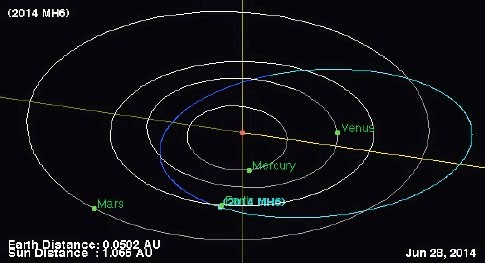The United States Geological Survey recorded a Magnitude 5.2 Earthquake at a depth of 5.0 km in southern Greenlee County, Arizona, close to the border with New Mexico, slightly before 10.00 pm local time on Saturday 28 June 2014 (slightly before 5.00 am on Sunday 29 June, GMT). This was a large event for the area, but there are no reports of any damage or casualties. People reported feeling the quake across much of southeast Arizona and southwest New Mexico, as well as in parts of the Mexican State of Chihuahua. The initial event was followed by a string of aftershocks, at least four of which exceeded Magnitude 3.0.
The approximate location of the 28 June 2014 Arizona Earthquake. Google Maps.
The precise cause of the event is not yet clear. Western Arizona is fairly prone to Earthquakes, driven largely by plate movement along the western North American coastal margin and the associated mountain growth in the Rocky Mountains, but the east of the state is generally less affected by this, and the quake may be the event of extensional movement along faults in the region, which forms part of the Basin and Range Province, an area of the North American interior where such faulting is common.
The extent of the Basin and Range Province. USGS.
The Basin and Range Province is particularly associated with tilted block faulting, which occurs as areas of the crust are drawn apart by tectonic activity, causing fracturing in the brittle parts of the lithosphere (near-surface rocks), resulting in the formation of a series of blocks, which are then tilted over by further extension, leading to the formation of a series of active faults.
Witness accounts of quakes can help geologists to understand these events and the rock structures that cause them. If you felt this quake (or if you were in the area but did not, which is also useful information) you can report it to the USGS here.
See also...
The United States Geological Survey recorded a Magnitude 4.6 Earthquake at a depth of 10 km, 50 km to the northwest of...
The United States Geological Survey recorded a Magnitude 2.6...
The United States Geological Survey recorded a Magnitude 5.3...
Follow Sciency Thoughts on Facebook.



















































